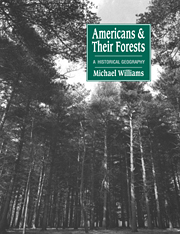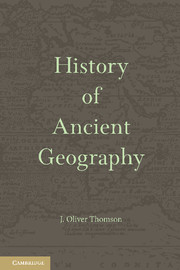Americans and their Forests
When Europeans first reached the land that would become the United States they were staggered by the breadth and density of the forest they found. The existence of that forest, and the effort either to use or subdue it, have been constant themes in American history, literature, economics, and geography up to the meaning of the forest in American history and culture, he describes and analyzes the clearing and use of the forest from pre-European times to the present, and he traces the subsequent regrowth of the forest since the middle of the twentieth century. Dr Williams begins by exploring the role of the forest in American culture: the symbols, themes, and concepts - for example, pioneer woodsman, lumberjack, wilderness - generated by contact with the vast land of trees. He considers the Indian use of the forest, describing the ways in which native tribes altered it, primarily through fire, to promote a subsistence economy. Early European settlers, he shows, extracted many products from the forest, and also began the extensive clearance of trees that would continue for almost three hundred years. Succeeding chapters, organized by topic and region, cover agricultural and industrial effects upon and uses of the forest. Dr Williams explores the rise (and often fall) of industries based upon forest products: naval stores, timber for building, charcoal and the iron industry, the railroads. Attention is devoted to the forests of the Middle West, the South, and the Pacific Northwest. By the late nineteenth century Americans began to realize that the forest was not boundless and moved to preserve those portions, still extensive, that remained. In the wake of the movement for preservation, Dr Williams describes how the forest began to regrow, especially after 1950, in areas where it had originally been vigorous and healthy, a development that continues today.
Reviews & endorsements
'Rare indeed is the privilege of reviewing a book that is destined to become a classic, but Michael Williams's Americans and Their Forests gives me just such an opportunity. Williams has written the definitive historical geography of the importance of forests in the life, livelihood, and landscape of the United States and the way in which our thinking about and our use of our forests have changed through time in response to our changing needs and ideals.' John Fraser Hart, Forest and Conservation History
'This magisterial work, ten years in the making, addresses the question, what happened to the forest that once covered so much of the United States? … Scholars, ranging from geographers to agricultural and literary historians, will applaud Williams's reach of analysis and attention to detail.' John R. Stilgoe, The Geographical Review
'While there are a number of solid studies that chronicle the significance of the forest in American history, this meticulously researched, elaborately documented, and carefully written volume provides the most detailed assessment of the evolving economic, political, and cultural relationship between Americans and their timber resources … The comprehensive nature of this study will establish it as a base point for further examination of the role of the forest in the growth and development of the United States.' Phillip Drennon Thomas, Journal of American History
'Michael Williams's Americans and Their Forests is rich in insights. Much more than a historical geography, as proclaimed by its subtitle, it explores the role of forests in American history, economics, literature and culture.' Norman Myers, The Times Literary Supplement
Product details
June 1992Paperback
9780521428378
624 pages
253 × 178 × 38 mm
1.123kg
26 b/w illus.
Available
Table of Contents
- List of illustrations
- List of tables
- Preface
- A note on tree, lumber, and plant association names
- Abbrevaitions
- Part I. The Forest Before 1600:
- 1. The forest in American life
- 2. The forest and the Indian
- Part II. Change in the Forest, 1600–1859:
- 3. The forest and pioneer life, 1600–1810
- 4. Two centuries of change: the commercial uses of the forest
- 5. The quickening pace: agricultural clearing, 1810–1860
- 6. The quickening pace: the industrial impact, 1810–1860
- Part III. Regional and National Impacts, 1860–1920:
- 7. The lumberman's assault on the forests of the Lake States, 1860–1890
- 8. The lumberman's assault on the southern forest, 1880–1920
- 9. The last lumber frontier: the rise of the Pacific Northwest, 1880–1940
- 10. Industrial impacts on the forest, 1860–1920
- 11. Agricultural impacts on the forest, 1860–1920
- Part IV. Inquiry and Concern: Questions About the Forest, 1870–1933:
- 12. Preservation and management, 1870–1910
- 13. Ownership, supply, protection, and use, 1900–1933
- 14. The rebirth of the forest, 1933 and after
- Notes
- References
- Index.






